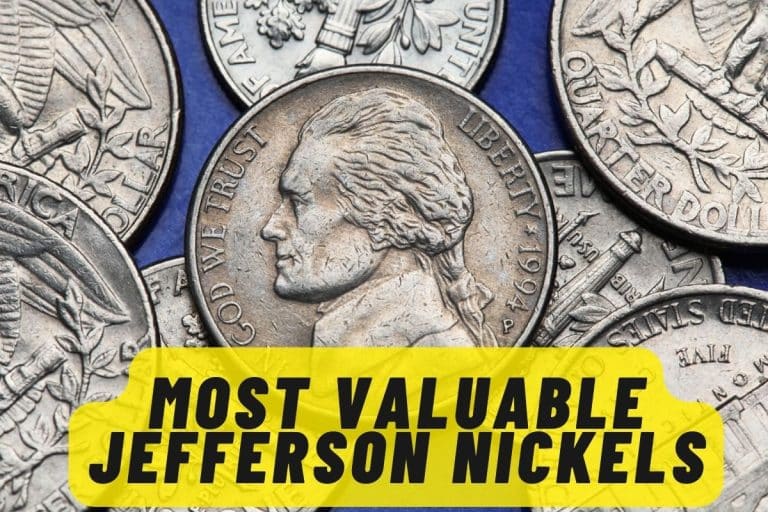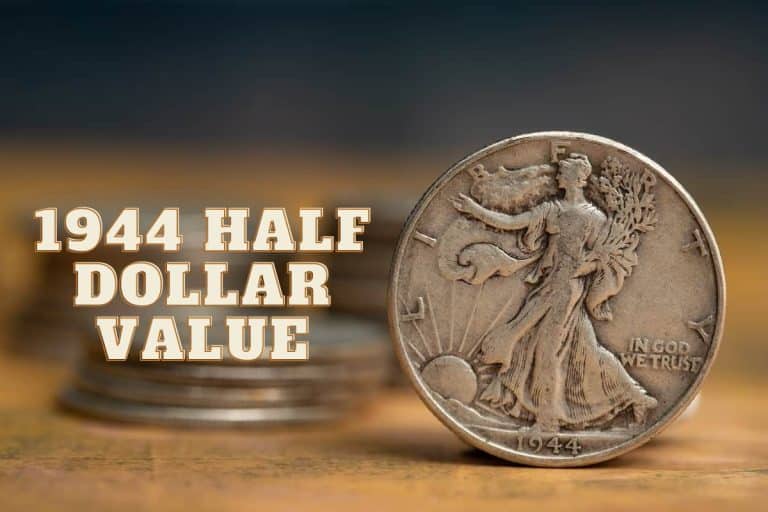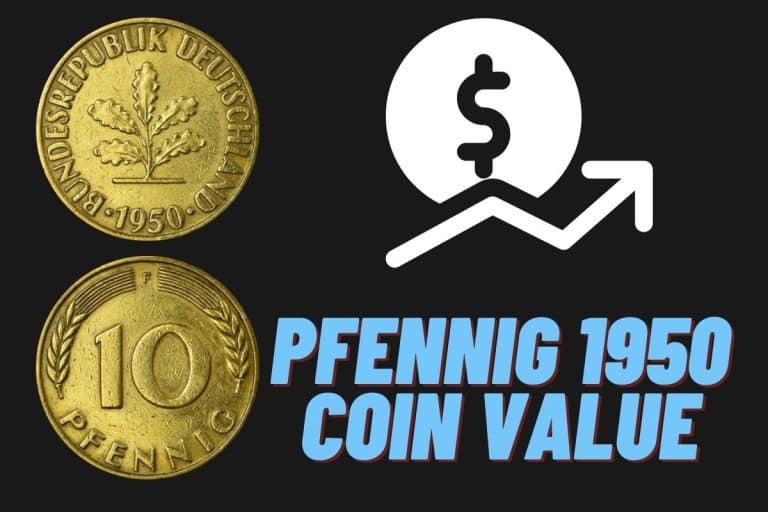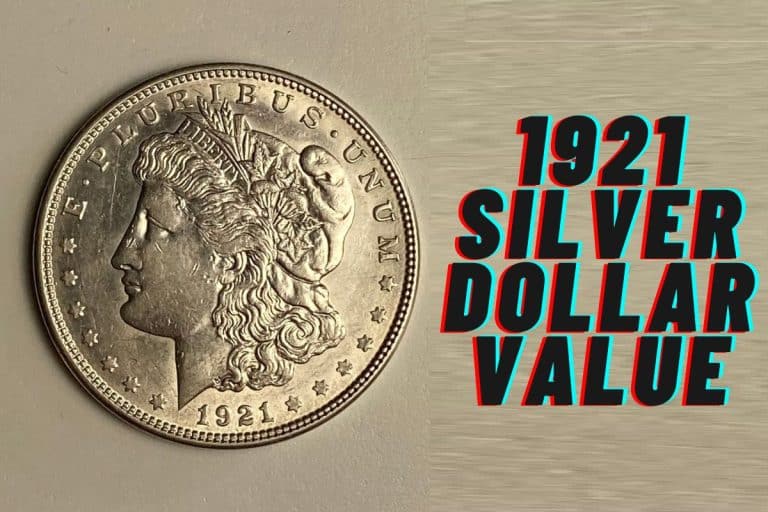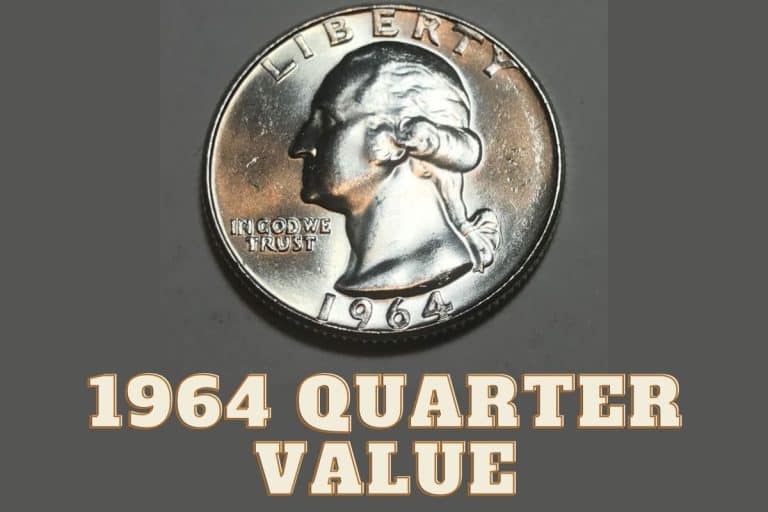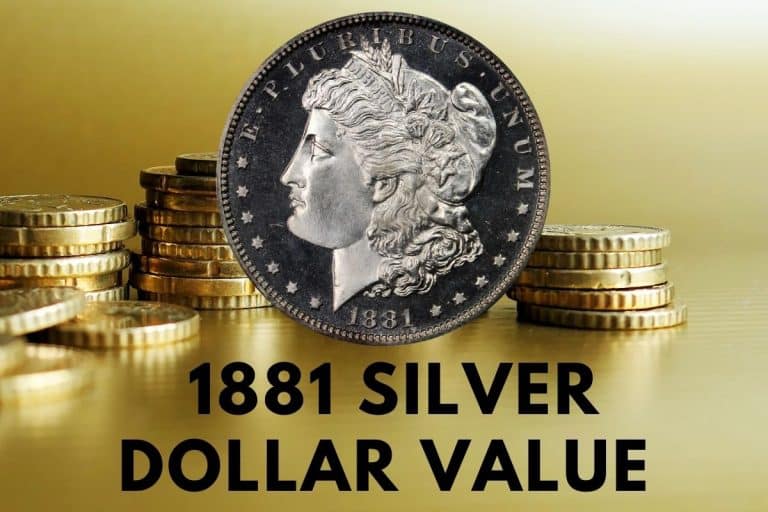1971 half dollar can give you insight into the history of American currency, as well as help you develop an eye for spotting valuable coins in the future. So why not take a closer look at the 1971 half dollar and discover what makes it such a special piece of American numismatic history?
Collecting coins is a great way to learn about the history of half-dollars and also a way of investment. Most coin collectors were eager about the 1971 half-dollar since it was the first coin in the series that lacked silver. The 1971 half-dollar value is meager; hence it's the ideal coin to start your coin collection with, especially if you are on a budget.
In this post, we have explained some factors that affect the value of the half dollar. Dig right into it!
1971 Half Dollar Value
Half dollars struck in 1971 did not have any silver content. As a result, the 1971 half-dollar value is meager compared to those minted in earlier years. NGC estimates that a 1971 half-dollar in the circulated condition is worth $0.60 in a free market.
But there are varieties of these coins, and they all have different values depending on the coin's condition. They include the proofs and the 1971 half-dollar errors discussed in this article. So, read on to know more about them.
The Value of 1971 Half Dollar Coin Varieties
Coin collectors were interested in the coin because it was the first half-dollar struck without silver. Its different varieties include the following:
1971 D Half Dollars
The Denver mint struck the highest number of these coins, 302,097,424, and they have a “D” mint mark on the obverse. High minting of these coins significantly reduced the half-dollar value such that a circulated dollar is worth 60 cents, and a coin in Mint state (MS) values at $3.
However, some of these coins can also be worth a fortune, like, the 1971 D MS 61 half-dollar which sold for $13,000 in 2018.
No Mint Mark 1971 Half Dollar.
A total of 155,460,000 half dollars were struck in Philadelphia that year. Since the mint struck so many, they have a low value. A coin in a circulated state is worth $0.60, while the MS is worth $45. An extraordinary piece sold at $1560 during an auction in 2018, which is the highest amount recorded.
1971 Kennedy Proofs
San Francisco mint produced 3,244,183 half-dollar proof coins. They all have an “S” mint mark on the obverse. These proof coins had the highest quality, so their value was higher than the rest.
A proof half dollar with the lowest value, graded as PR 64, has a value of $3, and the highest value, PR 60, with deep cameo contrast, has a value of $850.
During an auction in 2018, a collector paid one for $12,000.
1971 Half-Dollar Errors
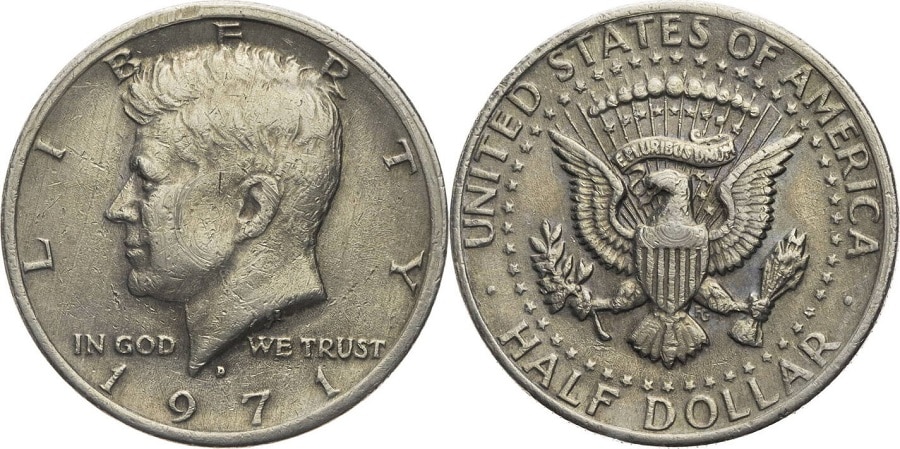
Errors during the minting result in some unique coins with a higher value than the regular coins. Some of the 1971 half-dollar errors are:
- The Off-center. A coin with this error has an easily identifiable crescent shape. It’s easy to make this error when you wrongly place the half-dollar, which strikes off-center on a tile. The value of this error coin depends on how far off-center it is from being hit.
- Double dies. Whenever the die strikes the planchet more than twice, an error occurs. Using a microscope, you should carefully check the numbers and letters in the coin. Such coins are scarce to get and have a very high value.
- Nickel struck half dollars. The nickel planchet lacks a reeded edge, so if you examine this coin closely, you'll see that the rim is broken and missing a piece because a nickel planchet diameter is too small to produce a half dollar.
- Silver Planchet struck half dollars. Even though half dollars minted from 1971 dint have silver, the mints minted some on silver planchets. These error coins are scarce and valuable: their value can be as high as $10000.
1971 Half Dollar History
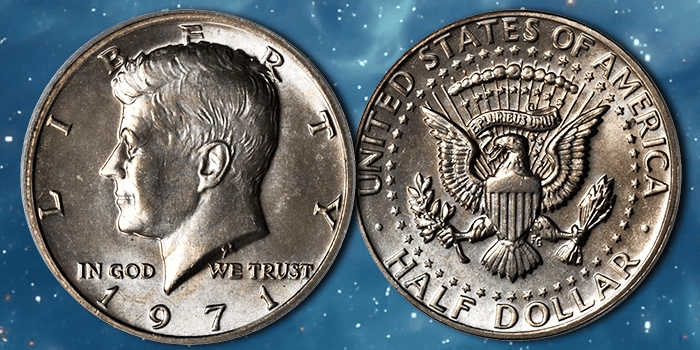
After the assassination of John Kennedy, the mints released a new half-dollar in his honour. A new half-dollar coin replaced the Franklin dollar in 1964. When the US mints first struck the Kennedy half dollars, they had 90% silver and 10% copper.
The price of silver started to rise such that many Americans preferred melting the coins rather than using them to mint coins. The US Mint responded by reducing the silver to 40% and increasing the copper to 60% to make the “silver clad”. However, in 1971, the mints stopped using silver and struck the coins using 75% copper and 25% nickel alloy.
1971 Half Dollar Features
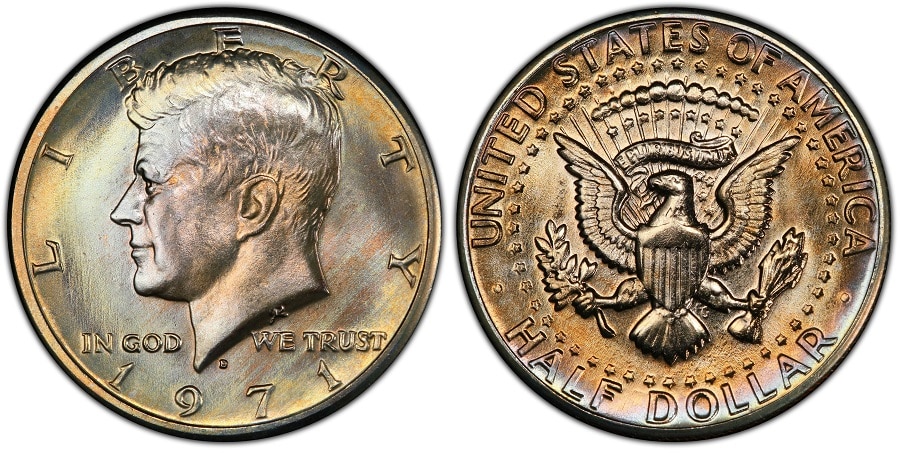
The unique feature of these half-dollar coins is that they contain 75% copper and 25% nickel alloy, unlike the previous currencies, without a slight silver content.
On the obverse side, you will see President Kennedy facing left and the word “LIBERTY” above his head. Slightly below his neck is the word “IN GOD WE TRUST” and the mint year “1971” at the base of the coin.
The tail side features an eagle with spread-out wings and the American president's coat of arms. The eagle's left claw holds an olive branch and a bundle of arrows on its right. Above the eagle's head is “E PLURIBUS UNUM”. Fifty stars surround the eagle. At the top of the coins are “UNITED STATES OF AMERICA” and “HALF DOLLAR” at the coin's bottom.
It weighs 11.34g, is 2.15mm thick, and has a 30.61mm diameter. The edges are reeded using 150reeds.
How Much Is A 1971 Half-Dollar Worth?
A regular 1971 half-dollar has a value of $2 but the higher the grade, the higher the value. Its melt value is $4. The rare 1971 silver dollar value is worth thousands depending on its quality.
Where Can You Find A 1971 Half Dollar?
You can easily buy or sell the 1971 half dollars on online marketplaces such as Amazon. You can also consult antique shops or coin dealers shop and buy or sell for them. When it comes to coin dealer shops, you ensure they are reputable.
Conclusion
The 1971 half-dollar was rare since it was the first coin in the series without silver. Since it does not have silver, you can expect that its value is lower than the previous coins. It's the ideal coin to start your coin collection journey.
However, some rare errors of this year are worth a fortune due to their rarity. If you would love to buy these coins, they are readily available on online marketplaces and from a local coin dealer.

